Members
MEMBERS
.jpg)
ANDREA GHEZ - Director - Co-Founder
Professor Andrea M. Ghez earned her B.S. in Physics from MIT in 1987 and her Ph.D. from Caltech in 1992, and has been on the faculty in the Department of Physics and Astronomy at UCLA since 1994. Professor Ghez has actively disseminated her work to a wide variety of audiences through more than 100 refereed papers and 200 invited talks, as well as features in textbooks, documentaries, and science exhibits. She has received numerous honors and awards including being the first woman to receive the Crafoord Prize, receiving the MacArthur Fellowship , and being elected to the National Academy of Sciences and the American Academy of Arts & Sciences. Professor Ghez has also served on committees for NASA, the National Science Foundation, and the National Academies of Science, among others.
Professor Ghez is a world-leading expert in observational astrophysics and has used the Keck telescopes to suggest the existence of a
supermassive black hole at the center of our galaxy, with a mass 4 million times that of our sun.
She is currently using and developing high spatial resolution imaging techniques to study star formation and investigate the
proposed massive black hole at the center
of our Galaxy. Using Interferometric techniques and Adaptive Optics,
Professor Ghez has been able to produce diffraction-limited images
of astronomical objects that has up to the development of Adaptive Optics been impossible to observe with ground based telescopes.
Read more...
Professor Mark Morris received his Bachelors in 1969 from the University of California, Riverside
and his Ph. D in Astronomy in 1975 from the University of
Chicago. He held a position as an Assistant Professor at Columbia University, the Department of Astronomy from 1977 to 1982, prior to joining the Department of
Physics and Astronomy at UCLA in 1983. He has been studying the innermost
regions of our Milky Way Galaxy for over 40 years, has more than 255 authored and co-authored papers
published in refereed journals, and is the co-author of three text-books.
Professor Morris co-discovered the magnetic filaments that pervade this Galactic region, which led to a new area of research within
astronomy. He is also the
co-discoverer of the ‘Double Helix’
Nebula , as well as the bipolar X-ray lobes that appear to have resulted from mass outflows near the central black hole.
Professor Morris’ other areas of research include mass loss from red giant stars, planetary nebulae, interstellar molecules,
and star formation.
Professor Morris uses radio, infrared, optical, and X-ray observatories such as the
VLA,
SOFIA ,
Keck, and
CHANDRA telescopes to learn as much as possible
about this complex region and to elucidate its unusual phenomenology,
much of which is likely to be important for understanding active galactic nuclei and galactic evolution.
Read more... Professor Eric Becklin earned his Bachelor of Science from the University of Minnesota in 1963, and
received his Ph.D in physics from the California Institute of Technology in 1968. He held research fellowships and research positions at
CalTech from 1970 - 1977, was a faculty Astronomer at the Institute of Astronomy, University of Hawaii from 1977 - 1989,
and has been a professor in the Department of Physics and Astronomy, UCLA since 1989. Professor Becklin was the Chief Scientist on
SOFIA from 1996 - 2008,
as well as the first director of the NASA Infrared Telescope Facility (
IRTF) in Mauna Kea, Hawaii. He is a recipient of the
Newton Lacy Pierce Price, the
Guggenheim Fellowship, and was elected into the
American Academy of Arts & Sciences in 2009.
Professor Becklin is internationally recognized for his expertise and research in infrared astronomy. He is widely known for his
discovery along with
Professor Gerry Neugebauer of indentifying the location of
the center of our Galaxy. By measuring infrared
radiation from stars he realized that the peak in the amplitude compared to the rest of the Milky Way
was the very core of our Galaxy. Professor Becklin's primary
focus is in the area of infrared imaging and spectroscopy and his research uses UCLA instrumentation developed in collaboration with
Prof. McLean, as well as facility instrumentation at the University of California's
Lick and
Keck (10 meter)
observatories. Read more... Professor Smadar Naoz received her B.S. in Physics in 2002 from the Hebrew
University of Jerusalem and her Ph.D. in Physics in 2010 from the Tel Aviv University. She has held a position as
Assistant Professor at the University of California Los Angeles since 2014. She has been awarded many fellowships and
prizes including the Einstein Fellowship in 2012, the ITC-Harvard prize Fellowship in 2011, the
Gruber Foundation Fellowship in 2010, and the National Postdoctoral Award Program for Advancing Women in Science in 2009.
Over the past few years Professor Naoz has worked on a wide range of dynamics research problems covering topics from cosmology to
extrasolar planets. During her PhD she studied the formation, evolution and properties of the first generations of galaxies and 21cm
fluctuations. While she was a graduate student, she was intrigued by the theoretical challenges and problems in the dynamics of our
solar and extra-solar planetary systems and decided to pursue those as well. This part of her work was further enhanced these past
years where she has studied the dynamical evolution of Hot Jupiters. Most notably, Professor Naoz has found a new mechanism that,
not only produces Jupiter like planets in a very close proximity to the star, but can also explain the eccentric and even retrograde
observed systems. This mechanism raises many interesting research questions, which are applicable to a diverse range of
astrophysical systems at different scales. Professor Brad Hansen received his B.Sc. in Physics from the University of Natal in 1989
and his Ph.D. in Astronomy from the California Institute of Technology in 1996. He held the Hubble Research Fellowship at
Princeton University prior to joining the Department of Physics and Astronomy at UCLA as a Professor in 2002. Professor Hansen
was awarded the Alfred P. Sloan Foundation Fellowship during 2004-2006.
Professor Hansen’s research includes four main interests -
White Dwarfs, Extrasolar Planets, Neutron Stars and Black Holes. Professor Hansen has used his theoretical models for the evolution and appearance of white dwarfs to estimate the ages of various
stellar components of our Galaxy, including both the stars in the immediate vicinity of the sun and some of the nearest globular
clusters.
One of his recent results is a setting lower limit on the age of our Galaxy of approximately 11 billion years.
Professor Hansen’s work on understanding various issues related to giant planets that orbit close to their parent stars has
resulted in the first detection of a phase variable brightness from one of these systems, which suggests that the planet has
different temperatures on the side facing the star and on the side facing away from the star. Lastly, Professor Hansen has been
studying the dynamics of thousand-solar mass black holes orbiting the main black hole. We believe these ‘intermediate mass’
black holes may have played an important role in the transport of young stars to the Galactic center and they will have an important
influence on the resulting dynamics. Professor Mike Fitzgerald received his B.S. in Engineering and Applied Science from the
California Institute of Technology in 2000 and his Ph.D. in Astrophysics from the University of California, Berkeley in 2007.
Professor Fitzgerald joined the UCLA Department of Physics and Astronomy as an Assistant Professor in 2009 and works as a
member of the UCLA Infrared Laboratory on various projects. Professor Fitzgerald held the
Michelson Postdoctoral Fellowship from 2007-2010 and was awarded the AAAS Newcomb Cleveland Prize in 2010.
Professor Fitzgerald’s research focuses on the interface between technical capability and scientific advance, particularly in the
areas related to the use of adaptive optics and other advanced optical and infrared instrumentation. Many of the problems
Professor Fitzgerald is now working on are related to the structure of the adaptive-optics point-spread function,
particularly in relation to high-contrast imaging of exoplanets and debris disks, as well as astrometry in the Galactic Center. Professor James Larkin received his B.S. in Physics and Mathematics from the
California State University at Hayward in 1990 and his Ph.D. in Astrophysics from the California Institute of Technology in 1996.
After holding the Robert R. McCormick Postdoctoral Fellow at the University of Chicago, he joined the Department of Physics
and Astronomy at UCLA as a professor in 1997. Professor Larkin currently serves as Deputy Director of the Infrared Laboratory
at UCLA.
Professor Larkin’s research focuses on extragalactic astrophysics, adaptive optics (AO) and infrared instrumentation.
Professor Larkin’s research group has often developed cutting edge systems to make first-of-their-kind observations.
They were the first to observe cosmologically distant field galaxies with a Shack-Hartmann AO system in order to directly
observe galaxy evolution and the first to apply speckle suppression techniques to look for planets around other stars.
The instruments that Professor Larkin has helped to build have allowed other scientists to make an impressive set of “first”
measurements like the first precipitation on another world, and the first spectrum of a directly imaged exoplanet.
Professor Larkin has recently completed work on the spectrograph for the Gemini Planet Imager and is devoting much of
his time now to the development of the Integral Field Spectrograph (IRIS) for the Thirty Meter Telescope (TMT).
The IRIS instrument will work at the unprecedented diffraction limit of TMT and enable a wide variety of scientific
observations.
Dr. Tuan Do received his B.A. in Physics and Astrophysics from the University of California, Berkeley in 2004 and his Ph.D.
in Astronomy from the University of California Los Angeles in 2010. He is currently a Dunlap Fellow at the Dunlap Institute at the University of Toronto.
Dr. Do's research interest is in understanding the formation of the nuclei of galaxies. He is currently studying the
composition and star formation history of the Milky Way nuclear star cluster and how these stars interact with the supermassive
black hole at the Galactic center. Dr. Do's interests lie in the the dynamics of nearby Milky Way dwarf galaxies and how
they can be used to study cosmology.
He utilizes both the space-based telescopes such as the Hubble Space Telescope, and adaptive optics on ground-based telescopes like
the Keck Telescopes and Gemini to obtain precise photometry and kinematics.
Dr. Do has also been working
on a data simulator and science cases for the Infrared Imaging Spectrograph (IRIS) for the future Thirty Meter Telescope (TMT).
Read more... Dr. Jessica Lu earned her Bachelors in Physics at the Massachusetts Institute of
Technology in 2000 and her Ph.D. in Astronomy from the University of California Los Angeles in 2008. She currently works
at the Institute for Astronomy at the University of Hawaii as an Assistant Astronomer. Dr. Lu was the recipient of both
the NSF Postdoctoral Fellowship as well as the CalTech Millikan Postdoctoral Fellowship. She is the Project Scientist
for the ‘imaka Project as well as a member of the science and astrometry teams for the IRIS instrument on the Thirty Meter Telescope.
Dr. Lu is an expert in astrometry and adaptive optics and is involved in a number of projects to develop next-generation AO systems.
Dr. Lu studies star formation in extreme environments such as in the cores of massive (greater than 10,000 solar masses) star clusters
and around the supermassive black hole at the center of the Milky Way. These are ideal targets for understanding whether environment
changes the star formation process and changes the resulting distribution of stellar masses known as the initial mass function (IMF).
The IMF is a fundamental parameter for many areas of astrophysics. These extreme environments require specialized astronomical
instruments that provide the highest spatial resolution at infrared wavelengths.
Dr. Lu uses laser-guide star Adaptive Optics (AO) to obtain high-precision astrometry, photometry and spectroscopy.
Dr. Gunther Witzel is currently a Postdoctoral Researcher with the Galactic Center Group at UCLA. He received his Diploma in Physics from the
University of Cologne, Germany in 2008 and his Dr. rer. nat. (Ph.D. equivalent) from the University of Cologne, Germany in 2012.
Dr. Shoko Sakai received her B.A. in Physics from Cornell University and her Ph.D. in Physics and Astronomy from Dartmouth College. She then joined the HST Key Project on the extragalactic distance scale at IPAC and continued her work on distance scale at NOAO in Tucson. She has been a research astronomer at UCLA since 2000. Her work focused on several distance indicators and understanding their systematics, including the Cepheid variable stars, tip of the red giant branch method and Tully-Fisher relation for spiral galaxies. She also worked on star formation history of galaxies in nearby clusters of galaxies. She has recently joined the Galactic Center Group.
Breann is currently a Graduate Student Researcher working with Andrea Ghez and the Galactic Center Group. Samantha is currently a Graduate Student Researcher working with Andrea Ghez and the Galactic Center Group.
Saundra is currently an Undergraduate Student working with Andrea Ghez and the Galactic Center Group.
Dr. Peter Wizinowich received his B.Sc. (physics and astronomy) and M.A.Sc. (engineering) from the University of Toronto,
and a Ph.D. in Optical Sciences from the University of Arizona. He has worked as a resident astronomer at the University of
Toronto Southern Observatory, an instrumentation technician at the Canada-France-Hawaii telescope, and a staff scientist at
the University of Arizona’ Steward Observatory. He has been the Optical Systems Manager at W. M. Keck Observatory (WMKO) since
1991. He has also served as committee chair for AO conferences and design reviews for other observatories.
Dr. Wizinowich has been active in AO since 1989 when he started the Steward Observatory adaptive optics group with Roger Angel.
During his time at WMKO, he has played a lead role in the installation and alignment of the telescope optics, the design and
implementation of the Keck adaptive optics (AO) systems and the implementation of the Keck Interferometer. Dr. Wizinowich has
worked to continually improve the Keck AO systems as principal investigator for grants from the W.M. Keck Foundation and the
National Science Foundation, and has been leading the effort to design WMKO’s next generation AO system.
Dr. Jim Lyke received his B.S. in Astrophysics in 1997 and his Ph.D. in Astrophysics in 2003 from the University of Minnesota.
Dr. Lyke currently works at the W. M. Keck Observatory as a support astronomer, ensuring visiting scientists receive their data.
As an instrument master, he is responsible for maintenance and operation of optical and infrared instrumentation.
Dr. Lyke’s research interests include classical novae. Using Adaptive Optics, Dr. Lyke is interested in how the dust and/or emission
lines are distributed in the expanding shell of the outburst. In supporting observations, Dr. Lyke enjoys working with many
different cutting-edge research projects in all areas of astronomy, including solar system objects, stars, the Galactic Center,
and even galaxies at z > 9.
Randy Campbell received his B.S. in Electrical Engineering from the South Dakota School of Mines and Technology and his M.S.
in Astronomy from San Diego State University in 1992. Randy is the adaptive optics (AO) operations lead at Keck where he provides
scientific and technical leadership for the AO operations team to maximize the scientific output of the AO facilities.
Randy plays a key role in bridging science and technology of the Laser Guide Star Adaptive Optics for Keck.
Randy’s research interests are primarily involved with the infrared studies of classical novae, a class of cataclysmic variable
stars. Spatially resolved imaging and integral field observations of novae enable the accurate determination of fundamental
properties of these objects. High angular resolution affords the earliest possible glimpses of the nova’s ejecta morphology and
will lead to refined estimates of the mass ejected in nova events; an important factor in knowing whether the white dwarf is
gaining or losing mass over a long sequence of many nova events. Mass loss verses mass gain is a fundamental question as to
whether or not these objects may be the long sought after progenitors of Type 1A supernovae. Randy also contributes significantly
to instrumentation research at Keck specializing in detector technology in the infrared and visual wavelengths. He is published
in the field of observatory operations and visualization of scientific data. He is very active in public outreach and education.
Keith Matthews built both the imaging camera that we use: NIRC (1995 - 2005) and NIRC2 (2004-present).
He was awarded the Weber prize from AAS in 2013:
In 1997 Dr. Britton received his Ph. D. in radio pulsar scintillation from the University of California Santa Barbara.
In 1991 he received a B.S. in Physics from the Massachusetts Institute of Technology. Dr. Britton has coauthored over
40 publications, has spoken widely at professional conferences and summer schools, and has served on a number of committees.
Dr. Matthew Britton has worked at the Optical Sciences Company as a Senior Research Scientist since 2008. He has been engaged in the development of high performance real time control systems and in the design of space and power constrained adaptive optics systems. Dr. Britton is currently Principal Investigator on a Phase I Air Force SBIR program to construct a 1,000 actuator
adaptive optics system to operate at 20 kilo-frames per second.
Previously Dr. Britton worked at the California Institute of Technology on the design and development of adaptive optics
systems for astronomical telescopes. He was the Principal Investigator for the CAMERA project: a robotic adaptive optics
(AO) system to be mounted on the 60 inch telescope at Palomar Observatory for rapid response observations of transient objects.
Dr. Britton has also been extensively involved in modeling and simulation of adaptive optics system performance, and has broad
experience in the area of wave propagation through turbulence and in software development. During his time at Caltech,
Dr. Britton performed a series of experiments utilizing the Hale 5 meter telescope and a separate DIMM/MASS turbulence monitor
to demonstrate predictions of the field dependent point spread function delivered by an adaptive optics system.
Together with collaborators, Dr. Britton also performed experiments on the Hale 5 meter
telescope to demonstrate a method for performing very high precision differential astrometry in crowded stellar fields.
Dr. Leo Meyer received his M. Sc. equivalent in Physics from the University of Aachen in 2005 and his Ph.D. in Physics from the University of Cologne. Dr. Meyer was awarded the DAAD Postdoctoral Fellowship in 2008-2009 and worked as an Assistant Researcher at UCLA from 2011 to 2014.
Dr. Meyer's research expertise lies in the fields of Galactic Center research, Black Holes, General Relativity, and High Resolution Imaging and Polarimetry with Adaptive Optics.
Brent Ellerbroek is the Head of the Instrumentation Department for the Thirty Meter Telescope International Observatory.
He has a bachelor of science in mathematics from the University of California at Los Angeles, and received his PhD in
mathematics from the California Institute of Technology. He has over 25 years of experience in modeling, designing, and
testing adaptive optical systems for atmospheric turbulence compensation. Brent has expertise in the application of control
theory and computational mathematics to adaptive optics, adaptive optics component technologies, adaptive optics modeling and
systems engineering, and project/contract management.
He is a Fellow and a journal editor for the Optical Society of America and a frequent chair of conferences on adaptive optics
Matthias Schoeck is a System Scientist for the Thirty Meter Telescope International Observatory. He started his studies
in physics at the University in Karlsruhe, Germany and received his PhD in astrophysics from the University of Wyoming in 1998.
He has been working on site testing issues for TMT, and previously for CELT/GSMT, since 2001. His previous experience,
gained during postdoctoral
positions in Lyon, France and Irvine, California, is in adaptive optics and methods of atmospheric turbulence analysis.
.jpg)
MARK MORRIS - Associate Director - Co-Founder
.jpg)
ERIC BECKLIN - Co-Founder
.jpg)
SMADAR NAOZ - Assistant Professor
.jpg)
BRAD HANSEN - Professor
.jpg)
MIKE FITZGERALD - Assistant Professor
.jpg)
JAMES LARKIN - Professor
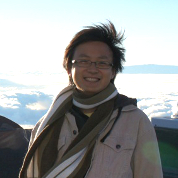
TUAN DO - Deputy Director
.jpg)
JESSICA LU - ifA - University of Hawaii
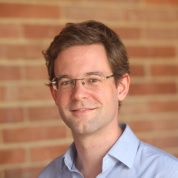
GUNTHER WITZEL - University of California Los Angeles

SHOKO SAKAI
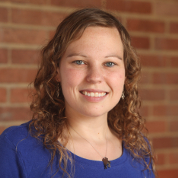
BREANN SITARSKI - University of California Los Angeles
.jpg)
SAMANTHA CHAPPELL - University of California Los Angeles
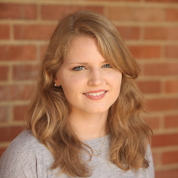
SAUNDRA ALBERS - University of California Los Angeles

PETER WIZINOWICH - Optical Systems Manager, W. M. Keck Observatory
.jpg)
JIM LYKE - Support Astronomer, W. M. Keck Observatory
.jpg)
RANDY CAMPELL - Adaptive Optics Operations Lead, W. M. Keck Observatory

KEITH MATTHEWS - California Institute of Technology
“The reliability, sensitivity and innovative qualities of his instruments have enabled ground breaking scientific discoveries for decades”.
Many of his recently instrumentation efforts have been in collaboration with UCLA’s IR Lab, including NIRC2,
for which the
IR Lab delivered the electronics, and MOSFIRE, which was led by Ian McLean and delivered to Keck Observatory in 2012.

MATTHEW BRITTON
.jpg)
LEO MEYER

BRENT ELLERBROEK - Thity Meter Telescope (TMT)
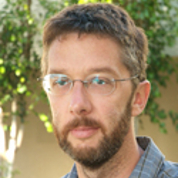
MATTHIAS SCHOECK - Thiry Meter Telescope (TMT)
STAFF

JILLIAN JONES - Galactic Center Administrative Assistant
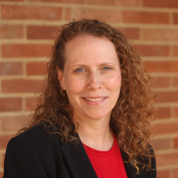
JULEEN MOON - Business and Communications Manager